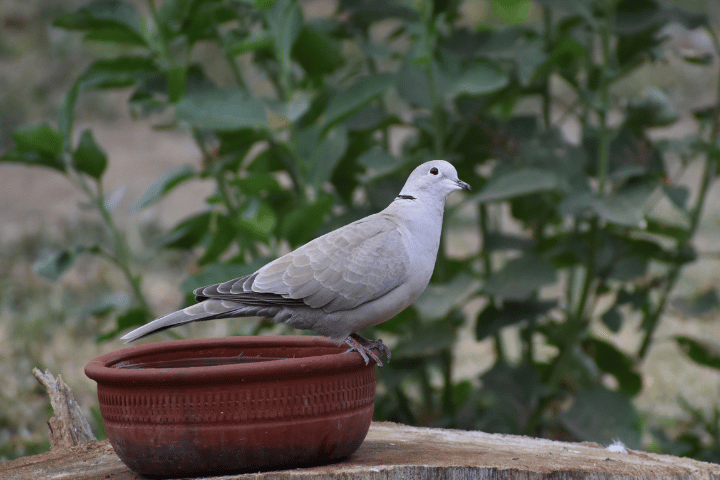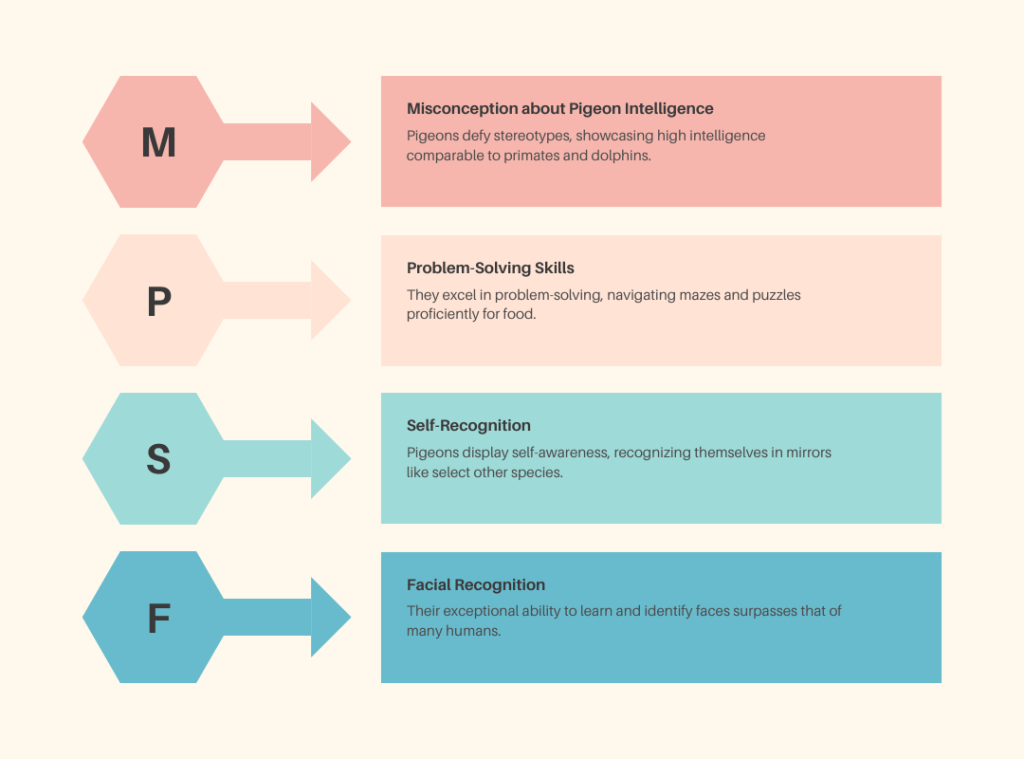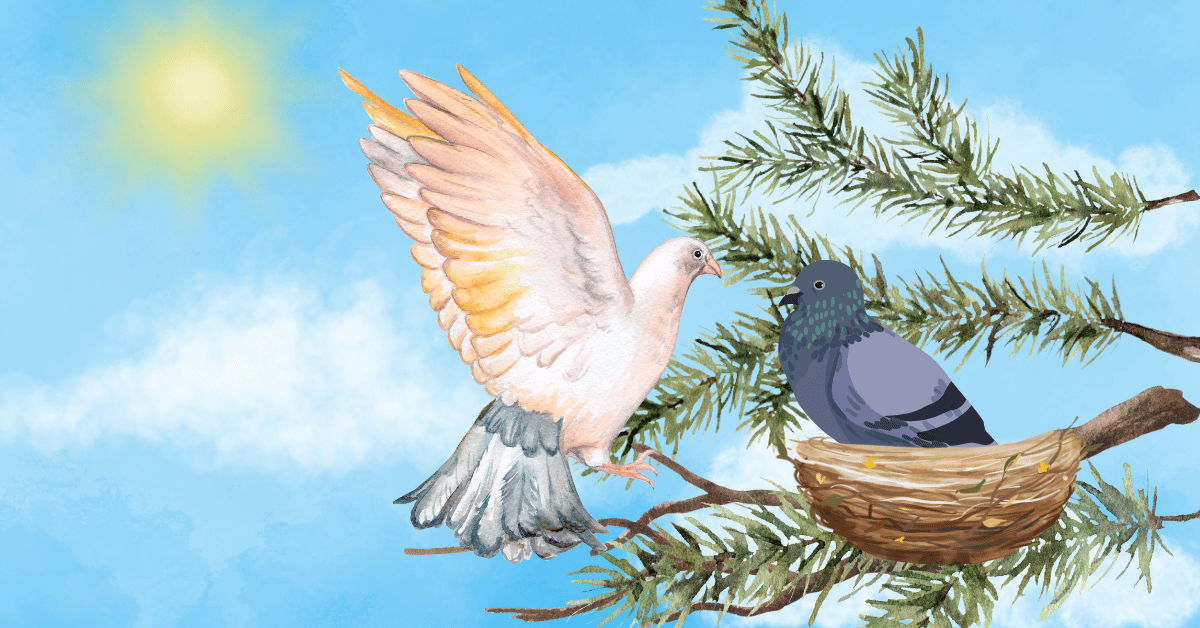Pigeons are often viewed as nothing more than pests, taking over city streets and buildings with their droppings and cooing.
However, these birds are so much more than just a nuisance. With a rich history, remarkable abilities, and fascinating biology, pigeons are truly one of the most underrated creatures in the animal kingdom.
In this article, we’ll explore the world of pigeons, exploring their history, biology, intelligence, and role in urban environments, while also highlighting their fascinating abilities and the importance of conservation.
Table of Contents
History of Pigeons
Pigeons have been domesticated for thousands of years, with evidence suggesting that they were first bred in Mesopotamia around 3000 BC. Initially valued for their meat and eggs, pigeons soon became prized for their incredible homing abilities, leading to their use as messengers in ancient civilizations. In fact, pigeons played a crucial role in many historical events, including wars, explorations, and even the development of modern communication systems.
One of the most famous pigeons in history is Cher Ami, a pigeon who served with the American Expeditionary Forces during World War I. Cher Ami delivered crucial messages between troops, saving the lives of hundreds of soldiers. She was awarded the French Croix de Guerre for her bravery and is still celebrated as a hero today.

Pigeon Biology and Behavior
Pigeons are members of the Columbidae family, which includes over 300 species of birds. They are characterized by their stout bodies, small heads, and distinctive cooing calls. Pigeons are incredibly adaptable, able to thrive in a wide range of environments, from the frozen tundra to the hottest deserts.
One of the most fascinating aspects of pigeon biology is their homing ability. Pigeons have an innate ability to navigate, using a combination of visual and olfactory cues to find their way back home. This ability is so strong that pigeons have been known to find their way back home from distances of over 1,300 miles.
Pigeons are also highly social creatures, living in large flocks and communicating with each other through a variety of calls and visual displays. They are monogamous, with pairs forming during breeding season and remaining together for many years.
Pigeon Intelligence and Problem-Solving

Pigeons are often viewed as simple, unintelligent birds, but this couldn’t be further from the truth. In fact, pigeons are considered to be one of the most intelligent bird species, with a cognitive ability rivaling that of primates and dolphins.
Pigeons have been shown to possess exceptional problem-solving skills, able to navigate complex mazes and solve puzzles to obtain food. They are also able to recognize themselves in mirrors, a cognitive ability shared by only a few animal species, including humans, chimpanzees, and dolphins.
In one famous study, pigeons were able to learn and recognize individual faces, even when the faces were partially obscured or shown from different angles. This ability is impressive, considering that many humans struggle to recognize faces in similar situations.
Pigeons in Urban Environments
Pigeons are often viewed as a nuisance in urban environments, with their droppings and cooing causing problems for city dwellers. However, pigeons play an important role in urban ecosystems, serving as a food source for predators and helping to clean up organic matter.
Despite their importance, pigeons are often persecuted in urban environments, with many cities implementing control measures to reduce their populations. However, these measures are often inhumane and ineffective, leading to more problems than they solve.
Instead, cities should focus on humane and sustainable management strategies, such as providing pigeon-friendly habitats and using non-lethal deterrents to discourage roosting.
Pigeon Racing and Breeding

Pigeon racing and breeding have been popular hobbies for centuries, with enthusiasts around the world breeding and training pigeons for speed, agility, and beauty. Pigeon racing involves releasing pigeons at a distant location and timing how long it takes them to return home, with the fastest pigeons winning prizes and accolades.
Pigeon breeding involves selecting and breeding pigeons for specific characteristics, such as feather color, pattern, and shape. There are over 100 breeds of pigeons, ranging from the tiny Budapest Tumbler to the majestic Fantail.
Conservation Status and Threats
Despite their adaptability and intelligence, pigeon populations are facing many threats, including habitat destruction, hunting, and climate change. Many pigeon species are listed as endangered or vulnerable, with some species facing extinction.
Conservation efforts are crucial to protect pigeon populations and ensure their survival. This includes protecting habitats, controlling disease outbreaks, and promoting responsible interactions with pigeons.
Conclusion
Pigeons are fascinating creatures, with a rich history, remarkable abilities, and a fascinating biology. By understanding and appreciating pigeons, we can work to conserve and protect them, ensuring their survival for generations to come.
In conclusion, pigeons are so much more than just urban pests. They are intelligent, social, and fascinating creatures that deserve our respect and admiration. By learning more about pigeons and their importance in our ecosystems, we can work to create a more sustainable and humane world for all.
Additional Resources
- The Pigeon Portal: https://pigeonportal.org/
- The Cornell Lab of Ornithology: https://www.allaboutbirds.org/guide/Rock_Pigeon/
- The National Audubon Society: https://www.audubon.org/field-guide/bird/rock-pigeon

